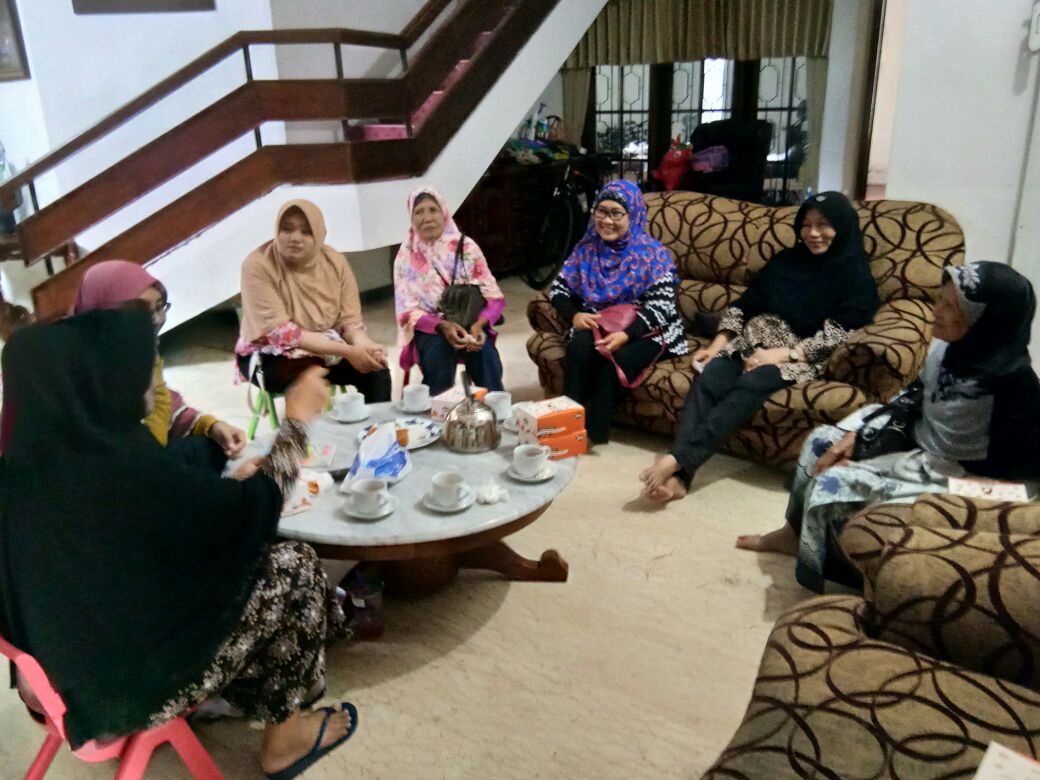Frictions
As a savings association to base on mutual help principle, the operationalization scope of arisanis limited to small groups in which the members know each other. Researches on arisan confirm the condition that it would not occur in a group where the members are unfamiliar to each other. The meaning of mutual help is restricted and not inclusive. What criteria for someone to be considered and invited as an arisan member? Inclusion and exclusion are two factors to govern the existence of arisan. It points to the limit of the common aspect of a community-based alternative financial group.
According to Erik Bähre, when writing about ROSCA in a South African township, ‘helping each other’, in many contexts, is often not compatible with ‘taking care of oneself’–“ ‘helping each other’ centered on sharing, while ‘taking care of oneself’ valued accumulation.”[11] The politics of everyday life is composed of countless moments where one has to make, again Bähre, “precarious choices” concerning when to help the others and to take care of personal safety. When helping each other and taking care of oneself collides, it results in frictions and episodes of what Bähre coined as “reluctant solidarity”.[12]
Precariousness
Difficult times often come unexpectedly. It causes precarious feeling. Not everyone has an advantage of being in a position where the availability of resources is abundant, or having a wealthy network to hold on. And nothing can be more dreadful than having debt bondage. The fear for debt is strong. Credit and debt have a long history in Southeast Asia. They informed social structures in many levels.[13] It tells about the power of the creditor and the limitation of the debtor. Arisan emerges as a support institution that derives from the familial realm. At once it is a mechanism with the certainty that each person would be able to support his or her own needs.
Arisan is often considered a typical ibu-ibu, or woman’s practice. Plenty of research suggests it is not a gendered practice. To locate arisan in the everyday domain of women provides space to examine the use of arisan and imagination of precariousness within the inter-relational framework of the wife, the husband, and the family. Hanna Papanek and Laurel Schwede read arisan as part of a woman’s strategy to help deal with economic stress of the family. Further, they see it as part of the conscious decision of a woman to actively engage in earning and managing in the family.[14] It signifies a degree of independency. The husband, the children, or other members of the family usually do not put serious attention to arisan. Such attitude stems from a perspective of the practice as woman’s practice. It has made arisan a special locus to lend freedom in managing the fund obtained.
A woman and mother, in Papanek and Schwede’s research, found many reasons to participate in arisan and to think about how to make and save more money for her family. Throughout time women have been affected by different kinds of uncertainty—the inflation of the 1950s and 1960s, the Japanese occupation, the fear of hunger, the fight for independence from the Dutch—experiences, which shaped childhood and disrupted schooling.[15] Each woman might have different reason, which encourage her to join an arisan. My mother always thinks about her desires for having enough money for my sisters’ family and myself. The purpose of the money does not need to be specific. What is important is there is enough money to be used when the needs call. My older sister always thinks about money to fund the education needs of her children.
Keep going
There have been attempts at modifying the structure of arisan. In a recent conversation with a friend, I was told that she participated in anarisan, in which three persons would get the money in one ‘pull’ (narik). It reduces the amount of money received, since the lump sum fund needs to be divided into three. At least, it is certain that fresh cash will be at hand on a scheduled time. There are many factors to ignite precariousness. Hence the feeling seems to be persistent. This is a factor to maintain the relevancy of arisan. Arisan is a known practice emerged as cultural reference to approach uncertainty. It is an attempt to come to grips with difficult situation. It shows the will to find something to hold on, and to endure.
[11] Bahre, Money and Violence: Financial Self-Help Groups in a South African Township, 90.
[12] Bahre, ibid., 99.
[13] Henley, “Credit and Debt in Indonesian History: Introduction”.
[14] Papanek and Schwede, “Women are Good with Money: Earning and Managing in an Indonesian City”.
[15] Papanek and Schwede, ibid., WS-77.
References
Bahre, Erik. 2007. Money and Violence: Financial Self-Help Groups in a South African Township. Leiden & Boston: Brill.
Geertz, Clifford. 1962. “The Rotating Credit Association: A Middle Rung in Development.”Economic Development and Cultural Change 10, no.3: 241-263.
Henley, David. 2009. “Credit and Debt in Indonesian History: An Introduction”, in Henley and Boomgaard (eds.), Credit and Debt in Indonesia, 860 – 1930: From Peonage to Pawnshop, From Kongsi to Cooperative, 1-40.
Hope, Kempe Ronald Sr. 1993. “Growth and Impact of the Subterranean Economy in the Third World.” Futures October: 864-876.
Miguel, Edward, Paul Gertler, and David I. Levine. 2006. “Does Industrialization Build or Destroy Social Networks?” Economic Development and Cultural Change 54, no.2: 287-317.
Newberry, Jan. 2007. “Rituals of Rule in the Administered Community: The Javanese Selametan Reconsidered.” Modern Asian Studies 41, no.6: 1295-1329.
Papanek, Hanna., and Laurel Schwede. 1988. “Women are Good with Money: Earning and Managing in an Indonesian City.” Economic and Political Weekly 23, no.44: WS-73-WS-84.
Shanmugam, Bala. 1991. “Socio-Economic Development Through the Informal Credit Market.” Modern Asian Studies 25, no.2: 209-225.
